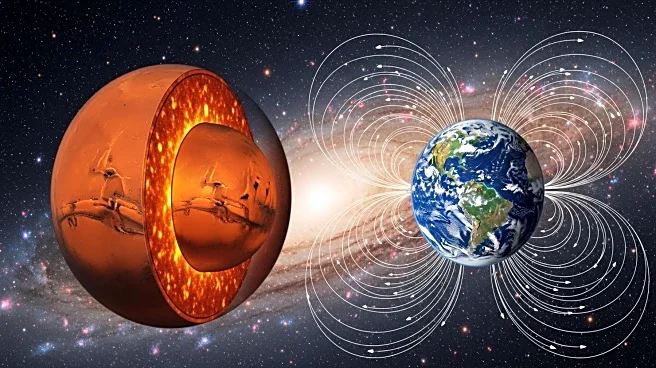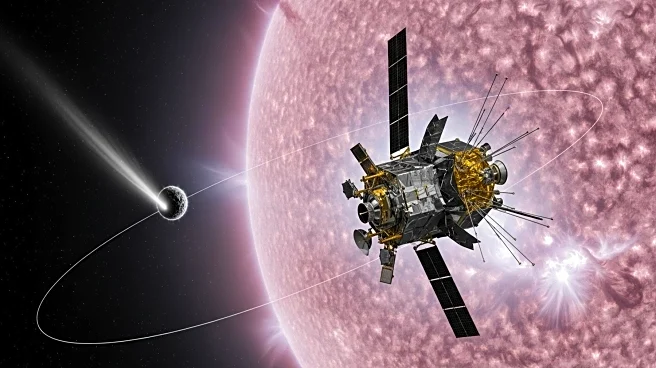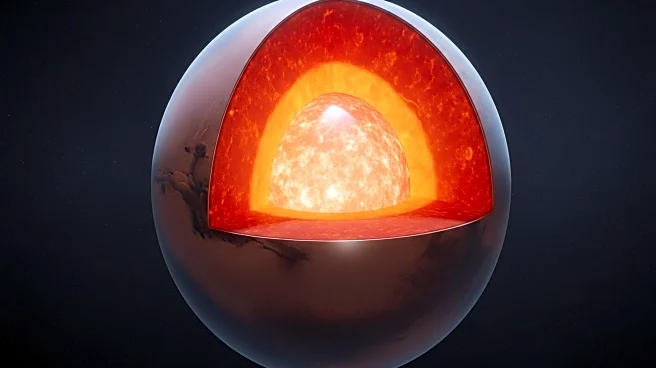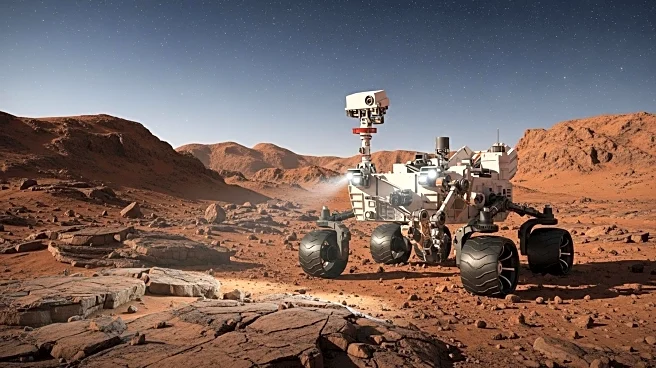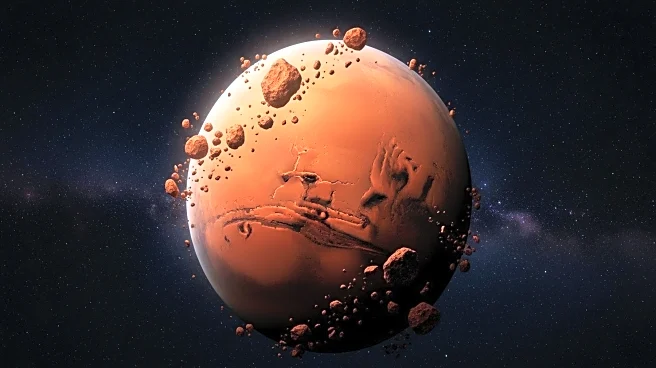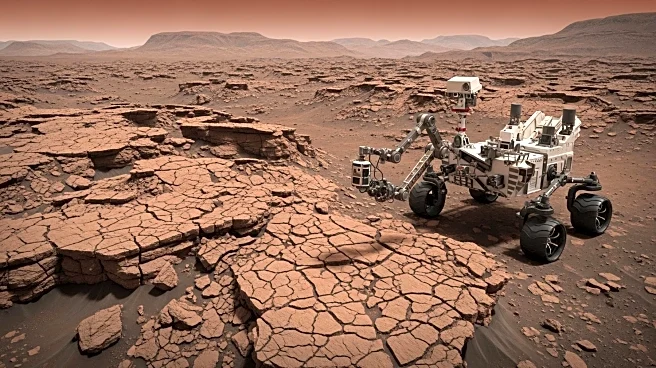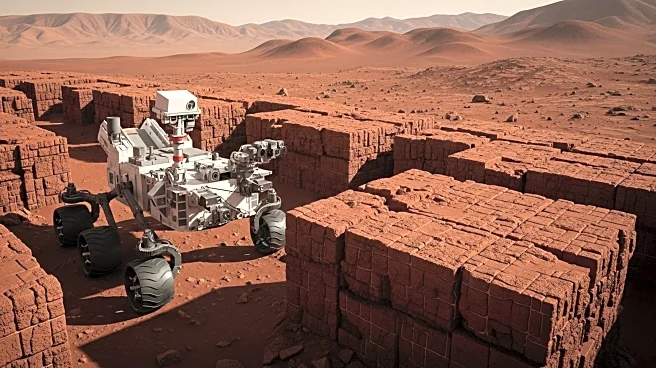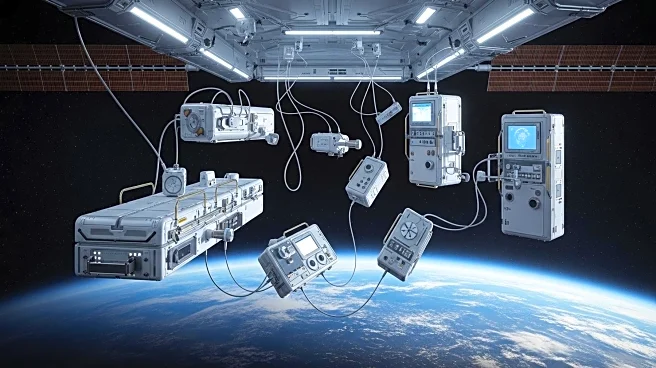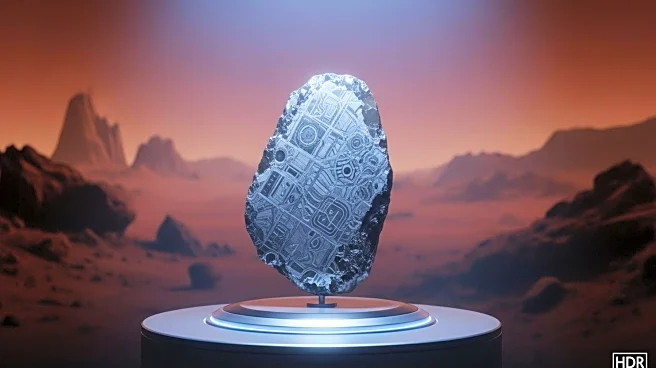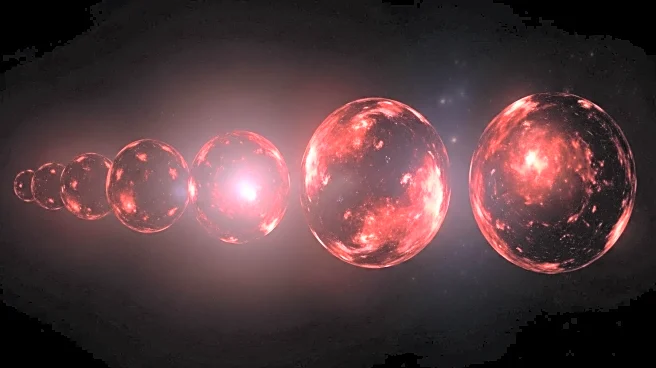What is the story about?
What's Happening?
Recent studies utilizing seismic data from NASA's InSight mission have provided new insights into the internal structure of Mars, revealing similarities to Earth's core. The research, published in Nature and Science, indicates that Mars has a solid inner core and a liquid outer core, akin to Earth's structure. However, unlike Earth, Mars currently lacks a magnetic field, which is crucial for protecting the atmosphere and supporting life. The studies suggest that Mars may have had a magnetic field in the past, but it faded over time. Researchers are examining Mars' mantle, which contains remnants of early collisions with comets, asteroids, or protoplanets, contributing to its thick, slow-mixing mantle that traps heat and affects the cooling of the core.
Why It's Important?
Understanding Mars' core and its lack of a magnetic field is significant for planetary science and the study of habitability. Earth's magnetic field plays a vital role in sustaining life by protecting the atmosphere from solar winds. Mars' inability to maintain a magnetic field may explain its barren landscape and lack of life. These findings contribute to broader knowledge about planetary formation and evolution, offering insights into the conditions necessary for life. The research also aids in comparative studies of other planets in the solar system, potentially guiding future exploration and the search for extraterrestrial life.
What's Next?
Further research is expected to delve deeper into the history of Mars' magnetic field and the processes that led to its disappearance. Scientists may continue to analyze seismic data to refine their understanding of Mars' internal structure and its implications for planetary evolution. These studies could inform future missions to Mars, focusing on its geological history and potential for past life. Additionally, the findings may influence the search for habitable conditions on other planets, guiding exploration strategies and technological developments in space missions.
Beyond the Headlines
The research highlights the dynamic and violent early history of the solar system, where planetary bodies frequently collided, shaping their current structures. Mars' thick mantle, containing remnants of these collisions, offers a unique glimpse into the solar system's formative years. This aspect of planetary science underscores the complexity of planetary evolution and the factors influencing habitability. The studies also raise questions about the long-term stability of planetary magnetic fields and their role in sustaining atmospheres and life.
AI Generated Content
Do you find this article useful?
